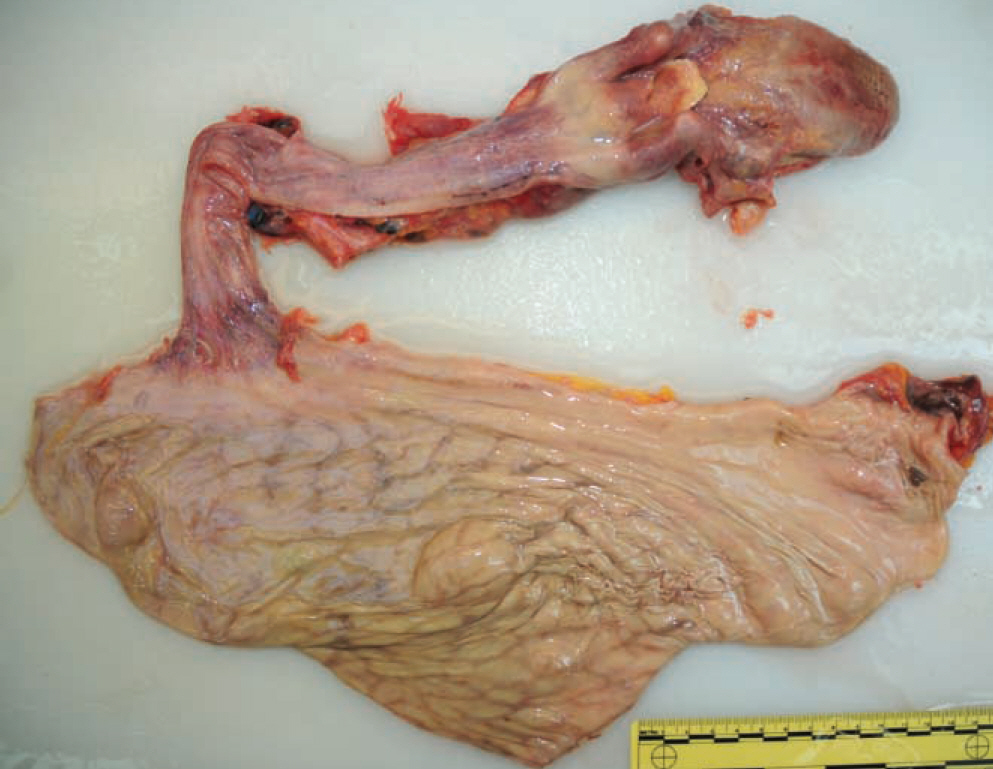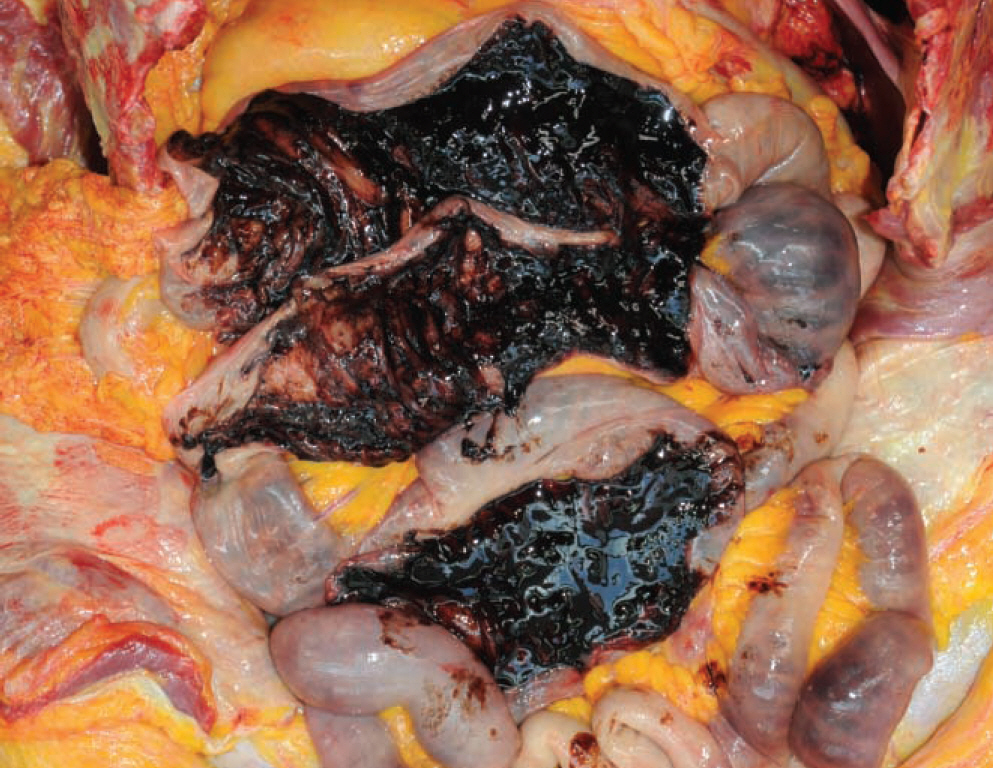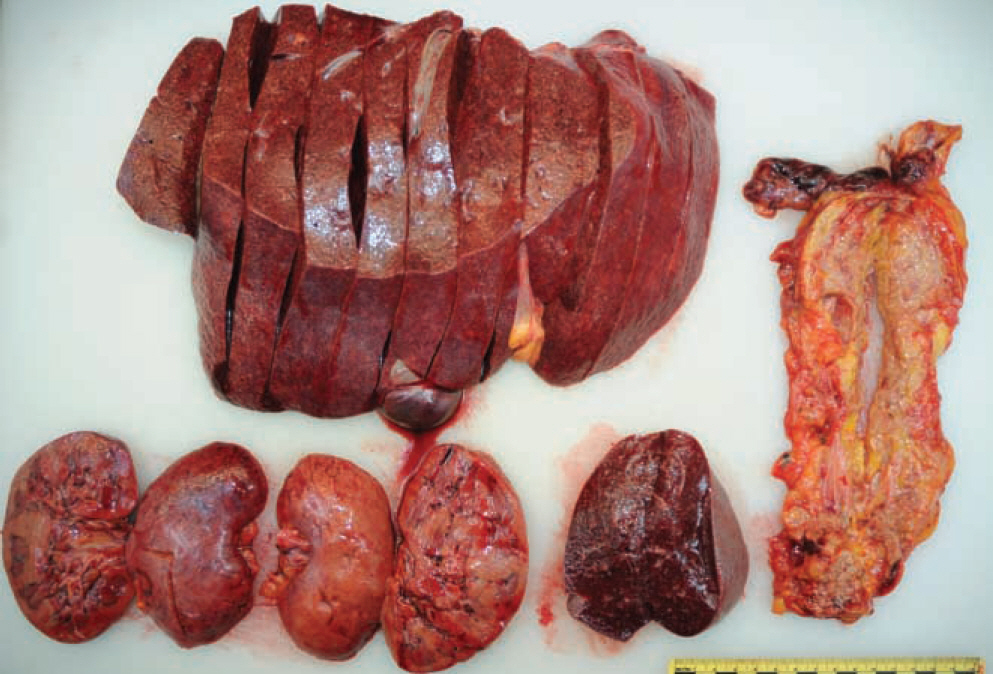Korean J Leg Med.
2014 Feb;38(1):26-29. 10.7580/kjlm.2014.38.1.26.
Death by Hemorrhagic Enteritis due to Suspicious Mushroom Poisoning: A Case Report
- Affiliations
-
- 1Forensic Medical Division, Daejeon Institute of Scientific Investigation, Daejeon, Korea. ecc88@korea.kr
- 2Forensic Medical Center, National Forensic Service, Wonju-si, Gangwon, Korea.
- KMID: 2305461
- DOI: http://doi.org/10.7580/kjlm.2014.38.1.26
Abstract
- Mushroom poisoning widely reported in Oriental and Western literature, is typically caused by accidental ingestion of toxic mushrooms that resemble edible mushrooms. Reports about poisoning due to species of Omphalotus, Amanita, Clitocybe, and other toxic mushroom species have been reported; toxicity depends on the mushroom species and the amount of toxin, which varies according to the climatic and environmental conditions. Symptoms of poisoning, such as unspecific nausea, vomiting, and diarrhea, as well as intestinal, hepatic and renal toxicities, also vary according to the mushroom species. Most patients recover with anti-muscarinic therapy and supportive care for nonspecific symptoms; however some cases of poisoning are fatal in children and elderly people. We report a case of sudden death due to mushroom poisoning in a 74-year-old woman, with hemorrhagic enteritis.
Keyword
MeSH Terms
Figure
Reference
-
1. Hori K, Fukui H, Fujimori T. Hemorrhagic enteritis due to poisonous mushroom. Int J Surg Pathol. 2008; 16:62.
Article2. Yamaura Y. Recent trends of mushroom poisoning in Japan. Chudoku Kenkyu. 2013; 26:39–43.3. Kaya E, Karahan S, Bayram R, et al. Amatoxin and phallo-toxin concentration in Amanita phalloides spores and tissues. Toxicol Ind Health. 2013; 29:Epub ahead of print.
Article4. George P, Hegde N. Muscarinic toxicity among family members after consumption of mushrooms. Toxicol Int. 2013; 20:113–5.
Article5. Kasahara Y. Clinical toxicology of mushroom poisoning. Omphalotus guepiniformis. Chudoku Kenkyu. 2013; 26:215–8.6. Kaya E, Yilmaz I, Sinirilioglu ZA, et al. Amantin and phal-lotoxin concentration in Amanita phalloides var. alba mushroom. Toxicon. 2013; 15:225–33.7. Iseki S. Clinical toxicology of mushroom poisoning. Amanita pantherina, Amanita ibotengutake. Chudoku Kenkyu. 2013; 26:219–22.8. Onodera M. Clinical toxicology of mushroom poisoning. Amainta virosa. Chudoku Kenkyu. 2013; 26:210–4.9. Nakajima N, Ueda M, Higashi N, et al. Therapeutic potential of nicotinic acid in erythromelalgia associated with Clitocybe acromelalga intoxication. Clin Toxicol (Phila). 2013; 51:815.10. Kamijo Y. Clinical toxicology of mushroom poisoning. Clitocybe clavipes, Coprinopsis atramentarius. Chudoku Kenkyu. 2013; 26:223–5.
- Full Text Links
- Actions
-
Cited
- CITED
-
- Close
- Share
- Similar articles
-
- A Case of Mushroom Poisoning with Russula subnigricans: Development of Rhabdomyolysis, Acute Kidney Injury, Cardiogenic Shock, and Death
- Type and treatment of toxic mushroom poisoning in Korea
- Severe but reversible acute kidney injury resulting from Amanita punctata poisoning
- Mushroom Poisoning by Macrolepiota neomastoidea
- CLINICAL ANALYSIS OF THE MUSHROOM POISONING





